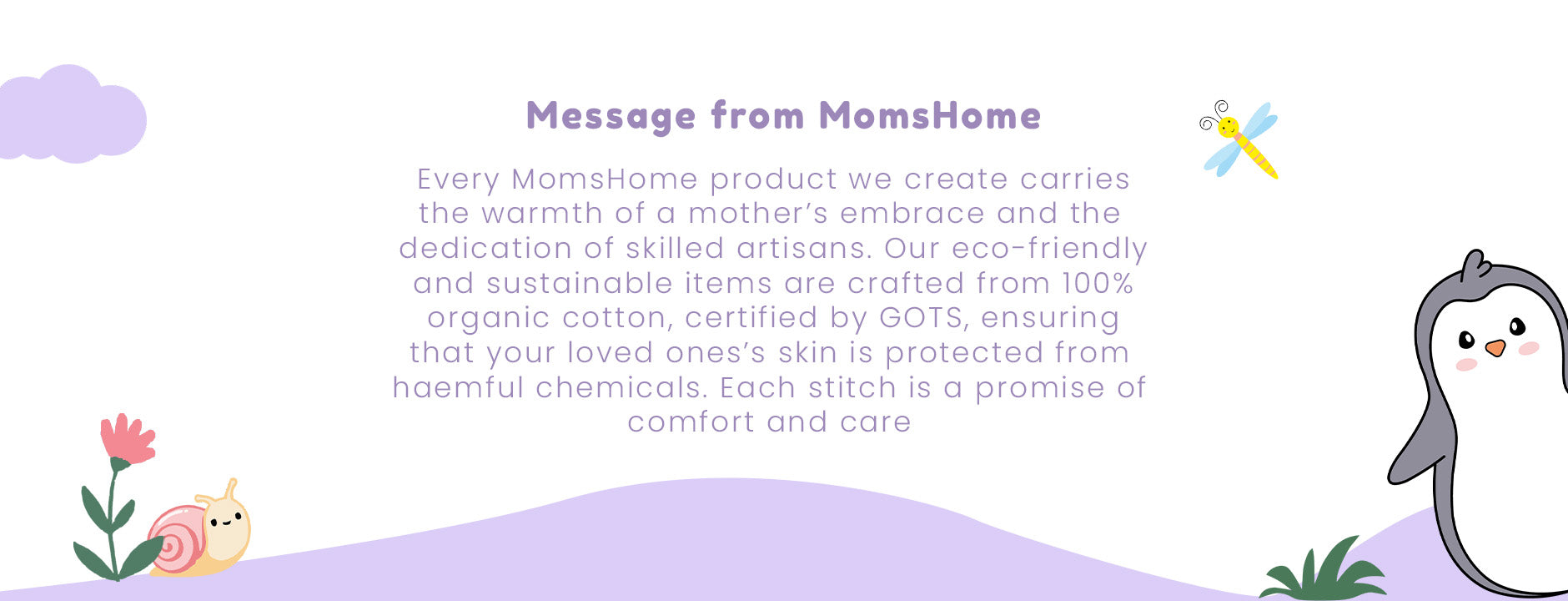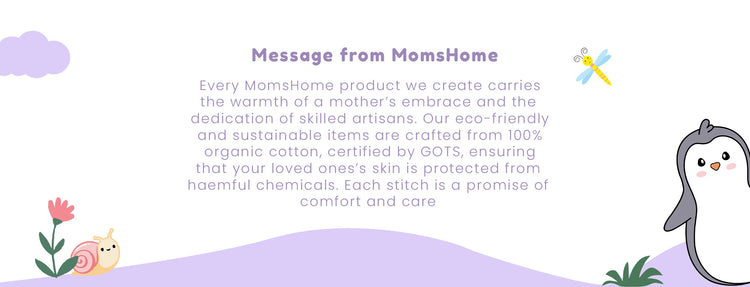Swaddling Guide: Swaddle Meaning & How To Use It
Swaddling has been practised for centuries and is known to provide many benefits for babies. One of the major benefits is that it helps babies feel secure and calm. Swaddling can recreate the feeling of being in the womb, which is familiar and comforting to newborns. It can also help soothe them when they're feeling fussy or having trouble settling down for sleep.
Another advantage of swaddling is that it can promote better sleep for babies. By keeping their arms and legs snugly wrapped, swaddling prevents the startle reflex, which can often wake them up during sleep. This can lead to longer and more restful sleep for both babies and their tired parents!
In addition to providing comfort and improving sleep, swaddling can also help regulate a baby's body temperature. Newborns have a hard time regulating their body heat, and swaddling can help keep them warm and cosy without overheating.
It's important to note that while swaddling can be beneficial, it's essential to follow safe swaddling practices to ensure the baby's well-being. Always ensure that the swaddle is not too tight, and leave enough room for the baby to move their hips and legs freely.
What is Swaddling?
Swaddling is a technique where we wrap a baby snugly in a blanket or cloth. The purpose of swaddling is to provide comfort, security, and mimic the feeling of being in the womb.
When a baby is in the womb, they are surrounded by warmth and tightness. Swaddling recreates this environment by wrapping the baby's arms and legs gently but securely. This snugness gives them a sense of security and helps soothe them, especially during their early weeks of life.
Swaddling also helps to limit the baby's reflexive movements, such as the startle reflex. By keeping their arms and legs wrapped, it prevents sudden movements that can wake them up or make them feel uncomfortable. This can lead to longer and more restful sleep for both the baby and their parents.
Additionally, swaddling can help regulate a baby's body temperature. Newborns have difficulty regulating their body heat, and swaddling can provide an extra layer of warmth without overheating them.
Overall, swaddling is a gentle and effective way to comfort and calm babies, providing them with a familiar and secure environment. It's important to remember that every baby is different, so it's always a good idea to consult with healthcare professionals for personalised advice on swaddling techniques.
Benefits of Swaddling
Swaddling offers a bunch of awesome benefits for babies. One of the big ones is that it promotes better sleep. By keeping their arms and legs snugly wrapped, swaddling prevents the startle reflex, which can often wake them up during sleep. This means more sleep for both the little one and their tired parents!
Another benefit is that swaddling helps babies feel secure and calm. It's like giving them a cosy little hug! Swaddling can recreate the feeling of being in the womb, which is familiar and comforting to newborns. It can also help soothe them when they're feeling fussy or having trouble settling down for sleep.
Swaddling can also help regulate a baby's body temperature. Newborns have a hard time controlling their body heat, and swaddling can help keep them warm and snug without overheating.
Let's not forget the adorable factor! Swaddled babies look super cute and cuddly. It's just heartwarming to see them all bundled up like little rolls!
How to Swaddle a Baby
Here's a step-by-step guide to help you do it safely and effectively:
- Start with a large, square-shaped swaddle blanket. Look for one made of breathable fabric like cotton or muslin swaddle.
- Lay the blanket flat on a surface, forming a diamond shape. Fold the top corner down about 6 inches.
- Place your baby on their back in the centre of the blanket, with their head above the folded corner.
- Take the left corner of the blanket and bring it across your baby's chest, tucking it snugly under their right arm.
- Next, take the bottom corner of the blanket and fold it up over your baby's feet, tucking it behind their shoulder.
- Finally, take the right corner of the blanket and bring it across your baby's chest, tucking it under their left side.
Remember, the swaddle should be snug but not too tight. You want to make sure your baby can move their hips and legs freely.
Swaddling can be a great way to soothe and comfort your little one, but it's important to monitor them while they're swaddled and always place them on their back to sleep.
Swaddling Safety Tips
Safety is a top priority when it comes to swaddling. Here are some important tips to keep in mind:
- Always place your baby on their back to sleep. This reduces the risk of Sudden Infant Death Syndrome (SIDS).
- Make sure the swaddle is snug but not too tight. You want to allow for natural movement of the hips and legs.
- Keep an eye on your baby while they're swaddled. It's important to monitor their breathing and make sure they're comfortable.
- Avoid overheating. Use a lightweight and breathable blanket to prevent your baby from getting too hot.
- Stop swaddling once your baby shows signs of rolling over. This usually happens around 4 to 6 months. At this stage, swaddling can increase the risk of suffocation.
Remember, every baby is different, so it's essential to adjust the swaddle technique based on your baby's needs and preferences. If you have any concerns or questions, don't hesitate to reach out to your healthcare provider.
When to Stop Swaddling
Knowing when to stop swaddling is an important milestone for your baby's development. Here are some signs that indicate it may be time to transition out of swaddling:
- Rolling over: Once your baby starts to roll over, it's time to stop swaddling. Rolling over increases the risk of suffocation when swaddled.
- Escaping the swaddle: If your little one consistently breaks free from the swaddle, it may be a sign that they are ready to sleep without it.
- Increased mobility: When your baby starts showing more mobility, such as trying to crawl or move around, swaddling can restrict their movement and hinder their development.
Here are some alternative sleep options for older babies:
- Sleep sacks: Consider using a sleep sack or wearable blanket. These provide a cosy and secure feeling without the need for swaddling.
- Transitional swaddles: There are swaddles available that allow for one or both arms to be free. This can help ease the transition out of full swaddling.
- Co-sleeping cribs: As your baby grows, you might want to transition them to a co-sleeping crib or a regular crib to give them more space to move around.
Conclusion
Let's wrap up our guide on swaddling safety with a quick summary of the key points:
- Always place your baby on their back to sleep to reduce the risk of SIDS.
- Ensure the swaddle is snug but not too tight, allowing for natural movement.
- Keep a close eye on your baby while they're swaddled to monitor their breathing and comfort.
- Use a lightweight and breathable blanket to prevent overheating.
- Stop swaddling once your baby shows signs of rolling over to avoid suffocation risks.
- Consult with your paediatrician if your baby has hip dysplasia or if you have any concerns.
Remember, these are general guidelines, and every baby is different. It's always a good idea to consult with healthcare professionals for personalised advice that suits your baby's unique needs.
If you have any specific questions or need further guidance, don't hesitate to reach out to your healthcare provider. They'll be able to provide you with the best advice tailored to your baby's individual circumstances.





